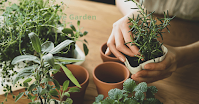Indoor Urban Horticulture: Bring Nature to your Home or Office
Indoor urban horticulture is becoming a popular practice amid busy city life. Having a piece of nature inside your home or office not only adds beauty and tranquility, but also brings benefits to your health and well-being. In this article, we'll explore indoor urban gardening, its benefits, and provide practical tips for creating your own green oasis indoors.
Benefits of Urban Horticulture Indoors
Before we dive into the techniques and tips, it's important to understand why indoor urban horticulture is so valuable:
- Improved Air Quality: Indoor plants help purify the air by removing toxins and increasing oxygen levels.
- Mental Well-Being: The presence of plants provides a more relaxing environment and reduces stress. Studies show that interacting with plants can lift mood and reduce anxiety.
- Connection with Nature: In urban environments, it is easy to disconnect from nature. Indoor plants allow you to maintain this connection even in enclosed spaces.
- Aesthetics: Plants add beauty and life to any environment, making it more aesthetically pleasing.
Tips for Urban Indoor Horticulture
Now, let’s explore some essential tips for starting your own indoor urban gardening:
- Choosing Plants: Start by choosing plants suited to the light conditions of your indoor space. Popular indoor plants include aloe vera, succulents, peace lily and philodendrons.
- Suitable Containers: Use pots or containers with drainage holes to prevent water accumulation. Make sure the containers match the size of the plants.
- Appropriate Soil: Use a soil specifically designed for indoor plants, which generally retains moisture without soaking the roots. Purchase quality soil mixes from gardening stores.
- Lighting: Position your plants according to their light needs. Some plants need direct light, while others do well in indirect light or shade.
- Cautious Watering: Avoid overwatering as this can lead to root rot. Water only when the soil is dry to the touch and use dishes under the pots to prevent water from leaking.
- Fertilization: Fertilize your plants according to specific instructions for each species. Indoor plants generally require less fertilizer than outdoor plants.
- Maintenance: Remove wilted leaves and faded flowers regularly. Prune when necessary to control growth.
- Spraying and Cleaning: Spray leaves with water regularly to maintain moisture and remove dust. Wipe the leaves occasionally to ensure the plants breathe well.
Ideas for Urban Indoor Horticulture
Here are some inspiring ideas for indoor urban horticulture:
- Herb Garden in the Kitchen: Grow aromatic herbs, such as basil, parsley and rosemary, in pots in the kitchen. Having fresh herbs on hand makes meals more flavorful.
- Succulent Garden: Create a succulent garden in a glass terrarium or small vases. Succulents are easy to care for and add a touch of nature to your decor.
- Green Walls: Install vertical plant panels in internal areas, transforming walls into living gardens. These systems can be customized according to the available space.
- Zen Garden: Create a Zen garden with sand, stones and some indoor plants, providing a space for meditation and relaxation.
1. What is indoor urban horticulture?
Indoor urban horticulture is the practice of growing plants, such as herbs, vegetables, flowers and even trees, inside urban buildings such as houses, apartments, offices and commercial spaces.
2. What are the advantages of indoor urban horticulture?
Advantages include access to fresh food, improving indoor air quality, improving interior decoration, promoting psychological well-being and connecting with nature in urban environments.
3. Which plants are ideal for growing indoors?
Plants that adapt well indoors include herbs such as basil and rosemary, succulents, pothos, orchids, ferns and some varieties of cherry tomatoes.
4. How to start practicing urban horticulture indoors?
Start by choosing a well-lit location, selecting suitable containers, purchasing desired plants, using appropriate soil, and providing adequate watering and care.
5. What lighting is needed for indoor plants?
Most indoor plants require bright to moderate indirect light. Some plants can adapt to dim indirect light, while others, like succulents, prefer direct light.
6. How is plants grown indoors watered?
Watering should be done when the soil is dry to the touch, but avoid soaking the plants. Use dishes under pots to collect excess water and avoid leaving plants in stagnant water.
7. Is it necessary to use fertilizers on indoor plants?
Yes, indoor plants often need fertilizer to supply nutrients that can be depleted from the soil over time. Use a balanced fertilizer and follow the manufacturer's instructions.
8. What are the common challenges when growing plants indoors?
Challenges include controlling pests and diseases, providing adequate lighting, maintaining adequate humidity, and choosing plants that adapt to indoor conditions.
9. Can I grow food indoors, like apartments?
Yes, you can grow foods indoors, such as herbs, cherry tomatoes, and peppers, as long as you have adequate light and enough space.
10. Is indoor growing expensive?
Costs vary depending on the type of plant and equipment needed, but many indoor urban horticulture projects can be tailored to different budgets.
Conclusion
Indoor urban horticulture offers a rewarding way to bring nature into the home or office. With the tips and ideas presented in this article, you are prepared to begin your own indoor plant growing journey. Enjoy the benefits of improved air quality, mental well-being and connection to nature, no matter the size of your space. Growing plants indoors is a way to make your life healthier, more harmonious and enjoyable. So get growing and reap the benefits of a greener indoor environment.


